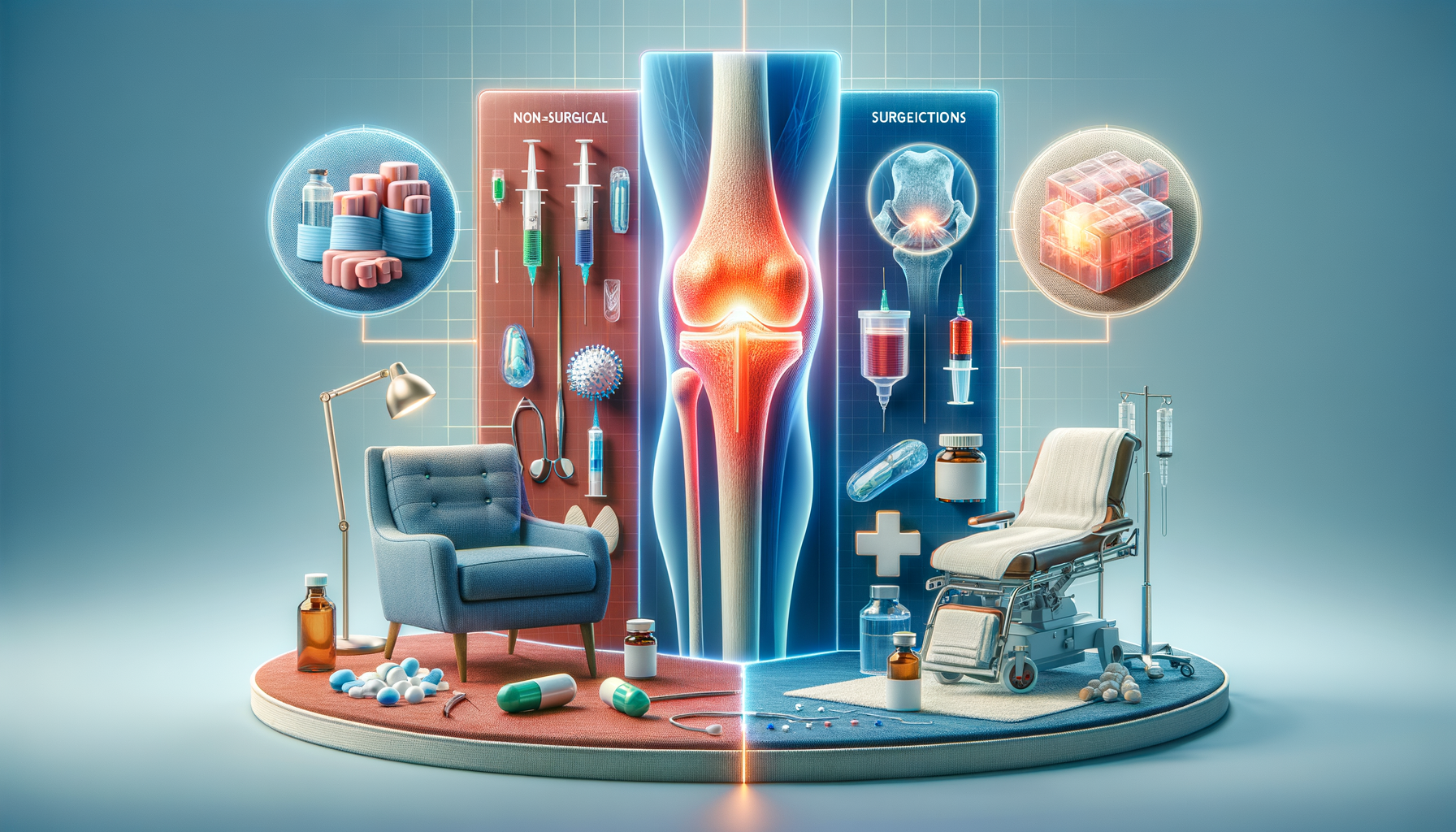Non-Surgical Solutions: Physical Therapy, Bracing & Lifestyle Changes
For many individuals experiencing knee pain, non-surgical solutions provide a pathway to relief without the need for invasive procedures. Physical therapy, for instance, plays a crucial role in strengthening the muscles around the knee, improving flexibility, and reducing pain. A well-structured physical therapy program can help patients regain mobility and function, often alleviating the need for surgery. Techniques such as manual therapy, therapeutic exercises, and modalities like ultrasound or electrical stimulation are commonly used.
Bracing is another effective non-surgical option. Knee braces can provide support and stability, particularly for those with conditions like osteoarthritis or ligament injuries. They help offload pressure from the affected area, allowing for improved movement and reduced pain. Braces come in various forms, from simple sleeves to more complex hinged designs, and choosing the right one depends on the specific condition and needs of the patient.
Lifestyle changes also play a significant role in managing knee pain. Maintaining a healthy weight can significantly reduce the stress on the knees, while regular low-impact exercises such as swimming or cycling can keep the joints flexible and strong. Additionally, incorporating anti-inflammatory foods into the diet and ensuring proper footwear can further support knee health.
When Injections and Medications Make Sense
For some individuals, medications and injections offer a viable solution for managing knee pain, particularly when other non-surgical methods have not provided sufficient relief. Over-the-counter pain relievers, such as acetaminophen or non-steroidal anti-inflammatory drugs (NSAIDs), are often the first line of defense against knee pain. These medications help reduce inflammation and alleviate discomfort, making daily activities more manageable.
In cases where oral medications are not enough, doctors may recommend injections. Corticosteroid injections are commonly used to provide quick and effective relief from inflammation and pain. They are particularly beneficial for individuals with arthritis or severe inflammation. Another option is hyaluronic acid injections, which aim to lubricate the knee joint, improving mobility and reducing pain in individuals with osteoarthritis.
It’s important to note that while injections and medications can provide significant relief, they are often considered part of a comprehensive treatment plan that includes physical therapy and lifestyle modifications. Patients should work closely with their healthcare providers to determine the most appropriate treatment strategy for their specific condition.
Surgical Options for Chronic Knee Pain: What to Expect
When non-surgical treatments and medications fail to alleviate chronic knee pain, surgical options may become necessary. Understanding what to expect from these procedures can help patients make informed decisions about their treatment. One of the most common surgical interventions is arthroscopy, a minimally invasive procedure that involves using a small camera to examine and repair the knee joint. This technique is often used to treat meniscal tears, remove loose bodies, and clean up damaged cartilage.
In more severe cases, knee replacement surgery may be recommended. This involves replacing the damaged joint surfaces with artificial components. There are two types of knee replacement surgeries: total knee replacement, which involves replacing the entire joint, and partial knee replacement, which only replaces the damaged part of the knee. Recovery from knee replacement surgery can take several months, and physical therapy is essential to regain strength and mobility.
Patients considering surgery should discuss the potential risks and benefits with their orthopedic surgeon. Factors such as age, overall health, and the severity of the knee condition will influence the decision-making process. While surgery can provide significant pain relief and improved function, it is typically reserved for cases where other treatments have not been successful.
The Role of Patient Education and Support
Patient education and support are vital components of managing knee pain effectively. Understanding the nature of the condition, the available treatment options, and the expected outcomes can empower individuals to take an active role in their recovery. Educational resources such as workshops, online courses, and support groups can provide valuable information and a sense of community for those dealing with chronic knee pain.
Support from healthcare professionals, family, and friends is also crucial. Regular communication with healthcare providers ensures that treatment plans are tailored to the patient’s needs and adjusted as necessary. Family and friends can offer emotional support and assistance with daily activities, making the recovery process more manageable.
Ultimately, a well-informed patient is better equipped to make decisions about their care and engage in lifestyle changes that promote long-term knee health. By fostering a supportive environment and encouraging open communication, patients can achieve better outcomes and a higher quality of life.
Combining Treatments for Optimal Results
Combining various treatment modalities often yields the best results for individuals suffering from chronic knee pain. An integrated approach that includes physical therapy, medications, lifestyle changes, and, when necessary, surgical interventions can address the multifaceted nature of knee pain. Each component of the treatment plan plays a specific role in alleviating pain and improving function.
For example, a patient might begin with physical therapy and lifestyle modifications to strengthen the knee and improve mobility. If additional pain relief is needed, medications or injections can be introduced. In cases where these measures are insufficient, surgery may be considered as a last resort. This comprehensive approach ensures that all aspects of the condition are addressed, leading to more effective and sustainable outcomes.
Patients should work closely with their healthcare team to develop a personalized treatment plan that considers their unique needs and goals. By combining treatments and adjusting them as necessary, individuals can achieve significant improvements in their knee health and overall quality of life.




Leave a Reply